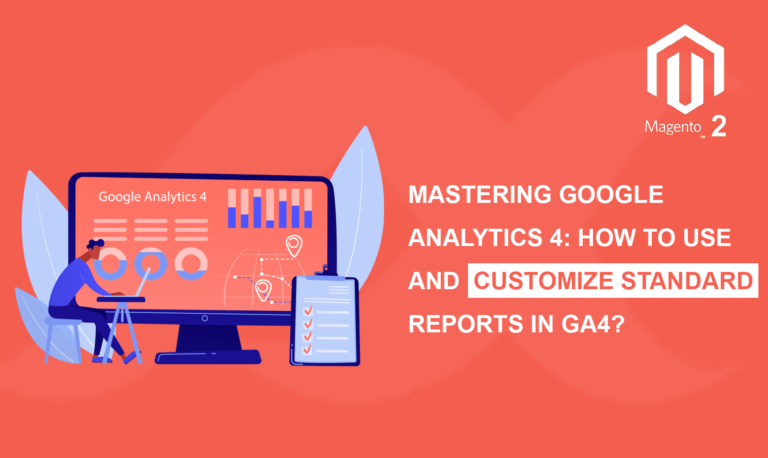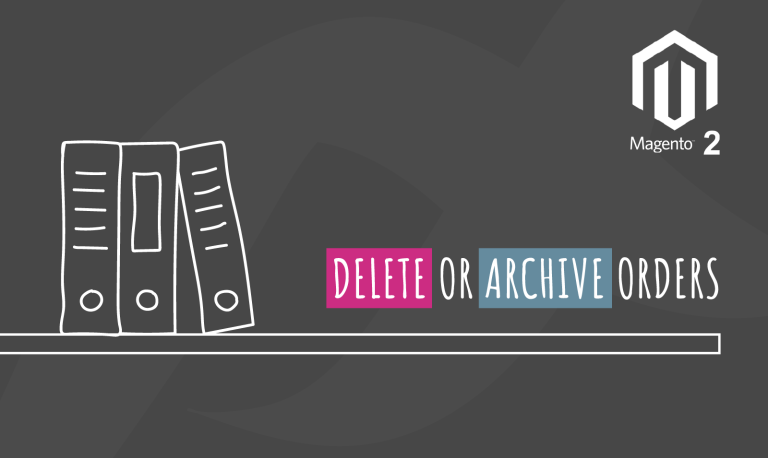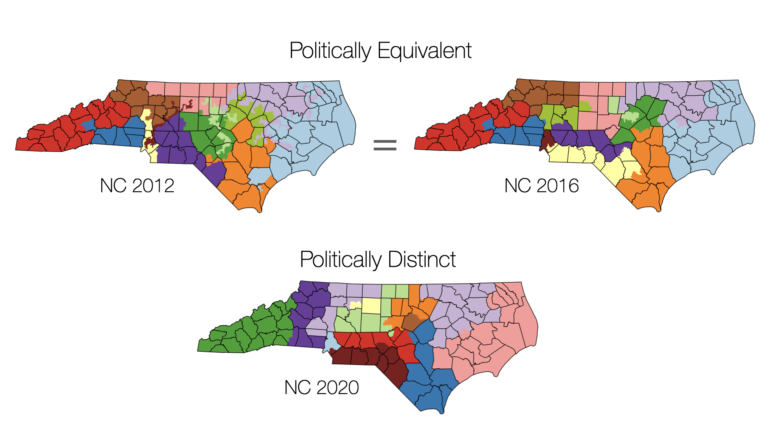Nearly four thousand years ago a Chinese Emperor Shen Nung, also known as the Father of Traditional Chinese Medicine, wrote in his The Great Herbal book that hemp can have theoretical powers for gout issues, rheumatism and absentmindedness among a variety of other ailments.
Fast-forward to present digital-ridden days: you can now purchase a growing lineup of CBD goods both online and in-person, at convenience stores and in luxury celebrity-owned boutiques, all across the US and abroad too.
But, despite a long history of usage and current popularity, CBD and the hemp plant it’s derived from remain largely misunderstood.
So What is CBD?
Cannabidiol, or CBD for short, is a ‘wallflower’ cousin of the more reactive delta-8-tetrahydrocannabinol (THC). These two compounds are found in the Cannabis plant, along with some 100 other types of cannabinoids.
Unlike marijuana, CBD is obtained from industrial hemp — an MJ plant variety that must contain less than 0.3% of THC on a dry weight basis to be cultivated under a USDA-approved license. Meaning that it does not cause the feeling of ‘high’, but instead is said to carry a number of wellness and therapeutic benefits.
CBD Industry by the Numbers
Partially due to the advertised health benefits, partially because of the close affiliation with the cannabis plant, consumer interest around CBD products has been on a steady rise since 2016.
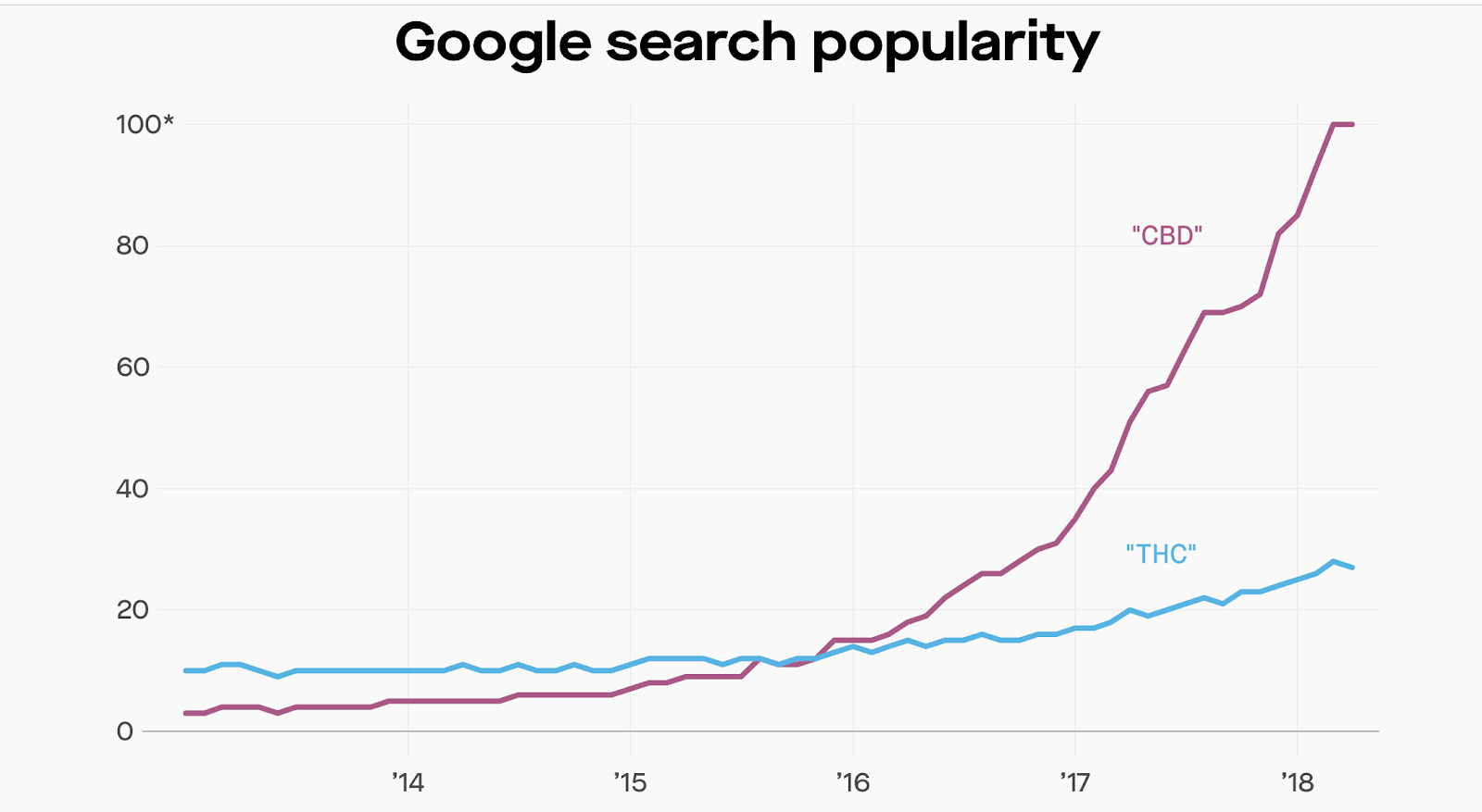
 Source: Atlas
Source: Atlas
2018, specifically, was named as the “breakout year” for CBD by EAZE, a San Francisco-based cannabis delivery platform.
In 2018, the number of US CBD consumers doubled, from 2.6% to 4.8% with *drumroll*…Baby Boomers leading the pack.
EAZE data suggests that female Boomers were among the most likely CBD users, opting for these products to deal with anxiety, sleep issues and pain relief.
A survey by Consumer Review further states more than a quarter of people in the U.S. say they’ve tried CBD at least once in the past two years.
That makes sense as CBD oil is now infused in loads of products across the board, especially in the wellness, food, beverage and beauty industries. From tinctures and topicals to gummies and even lattes, consumers now have a bevy of CBD products to explore.
So what makes them tick the most? According to Brightfield Group, regular CBD users prefer to use vaping products, followed by the use of high-CBD flower:
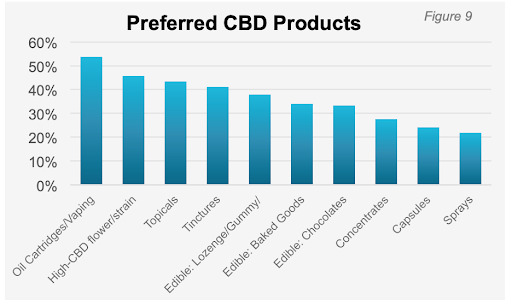

Source: Brightfield Group
Growing interest? Checked. Overall consumer awareness? Rising! What about market growth prospects? Well, these seem to be solid too.
By 2025, the retail market for CBD products in the US is expected to hit $16 billion, up from $2 billion in 2018.
Compound the above with the fact that, among those who are familiar with CBD, 80% support its usage (even if they are not personally using it) and it becomes clear that CBD is a very promising niche for starting an online business.
9 Steps for Starting a CBD Business Online
Hyped products often have a short shelf life. But Inferring from above, the interest in CBD is here to stay.
So if are interested in exploring this high-growth niche, here are the main steps for starting an online CBD business:
- Identify your CBD niche and products.
- Understand the laws and regulations around CBD.
- Generate a thorough CBD business plan.
- Get your business documents in order.
- Find your CBD supplier.
- Discover the perfect ecommerce platform.
- Build up your site.
- Determine shipping and payment terms.
- Market your business.
Identify Your CBD Niche and Products
A quick sweep through the (digital) shelves of any wellness store will prove that you can now buy CBD-anything. Creams and ointments, human and pet chewies, hemp clothes and accessories — when the consumer interest is high, loads of entrepreneurs try to capitalize on the hype.
What should you sell then: the trendy stuff or the “classics”? Well, that’s for you to decide. When assessing the overall market prospects, look into the general niches first. Here are the most popular ones:
- CBD-infused foods/beverages.
- Supplements/wellness products.
- CBD-based cosmetics.
- CBD pet products.
Next, you should zoom in on your product types. Most of these differ, based on the CBD consumption method:
- Drops and sprays: The key ingredient in both is CBD oil, decarboxylated from hemp/hemp flowers and mixed with a carrier oil. Drops and sprays can also include flavoring agents and other compounds that make them more pleasant to ingest.
- Pills and capsules: Wrapping a dose of cannabinoid in gelatin or soft gel capsule makes it more digestible. Also, since many people take CBD as an alternative to over-the-counter medicine, this form may seem more familiar and thus appealing, to them.
- CBD vapes and cartridges: Inhalation products tend to be popular among recreational MJ users and people who enjoy the social aspect of vaping. Also, this method is often preferred by consumers using CBD for pain relief as it gets absorbed faster to the blood system through inhalations.
- Tinctures: Just like medicinal tinctures, CBD-based ones are made by combining cannabinoids with alcohol or another strong solvent. Sometimes CBD tinctures also contain extra herbs. While most don’t have great flavor, tinctures are popular with people who want to feel the effects of CBD quickly.
- Topicals and patches: Best suited for targeted action such as joint, back, or menstrual pain, topical ointments and CBD patches appeal to consumers who don’t like hemp flavor or prefer external applications for other reasons.
- CBD edibles: Gummies, candy, chocolate, honey sticks, there’s a huge variety of munchable CBD products on the market. Most of them make hemp look less ‘medicinal’ and more of a wellness treat. In 2019, 3 out of 4 chefs identified CBD-infused food as a hot trend.
Understand the Laws and Regulations Around CBD
The Farm Bill, passed at the end of 2018, legalized the commercial production of hemp in the United States. Specifically, you can grow industrial hemp and then legally sell products containing hemp-derived CBD across the country.
But there are some restrictions too:
- The hemp you are using to produce CBD cannot contain more than 0.3% of THC. Any cannabis plant with a higher concentration of THC is automatically considered a marijuana plant and stronger regulations kick in.
- CBD, produced from marijuana plants, is legal in 15 states for recreational cannabis usage and in 36 states for medical use.
Now when it comes to cannabinoid as a substance, the regulatory matter gets complicated. To date, FDA has approved only one CBD-based prescription drug, Epidiolex. Meaning that no other CBD brand can make health claims regarding their CBD products. Also, the FDA prohibits adding cannabinoids into food, or marketing anything with it as dietary supplements.
Wait, but what about an array of edible CBD products that are on the shelves? Are they illegal? It’s a gray area.
Because the stance on CBD legality status isn’t consistent across federal and state regulators. As PBS writes:
Federal provisions have a blindspot whereby a store can sell as much CBD as it wants, as long it doesn’t make any health claims about its products, put it in food nor add it to dietary supplements.
While FDA doesn’t allow CBD in food, they are not taking any action against CBD sellers either, except for issuing warning letters for falsely-advertised health claims.
Now let’s recap:
1. Selling federally.
Federal laws allow legal CBD sales nationwide. So long as your products contain less than 0.3% THC, you are good to go to market.
2. Selling statewide.
Statewide laws differ. In general, all states should allow sales of hemp-sources CBD with the right THC threshold. But specific favorable or not-so regulations may kick-in in states where recreational marijuana usage isn’t legal. So it’s best to cross-check with a local legal specialist if there are any restrictions regarding CBD product sales in your state.
Create a Thorough CBD Business Plan
Jumping into a business without a solid business plan is like driving without a rearview mirror: you can do it, but you may miss a huge obstacle heading your way.
When it comes to the CBD niche, your business plan is also your navigator for staying atop of changing regulatory policies, conflicting operational priorities and new business opportunities, fueled by the market demand. Plus, it’s the document your financial supporters and other stakeholders will want to see.
Here’s what should go into your business plan for ecommerce CBD operations:
- Start with market analysis: The goal of a market analysis is to supply you with sufficient information about your industry size, customers, competitors and other market variables. So that you could make more informed decisions regarding your product positioning, pricing and overall go-to-market strategy.
- Pick your brand name and confirm product range: Explain how your brand name, along with other brand assets, differentiates you from the competition. Recap which CBD niche you plan to target and why. briefly describe your product range, focusing on the product quality and competitive parameters.
- Determine your financing: Estimate how much cash you’ll need to launch your operations. Break them down as one-time pre-launch investments (e.g commerce website development, inventory purchase, product design/branding) and ongoing monthly costs ( e.g. inventory restock, handling/packaging, shipping, marketing, taxes, etc.). Always add extra padding for ‘unplanned’ expenses because these will surely happen. Then look into how much time and how many sales you’ll need to make to break even monthly. If you are self-financing, estimate how much of a runway you’ll end up having. If you are planning to secure investment later on, prepare more figures describing your anticipated expenses vs profits, plus set targets for CPA (cost per acquisition), AOV( Average order value), sales conversion rates, customer retention rate, customer lifetime value (CLV).
- Include a realistic marketing plan: A marketing plan details your strategy for growing awareness around your CBD brand, acquiring new customers and fostering repeat purchases. It’s a cornerstone document that should be a) data-backed b) realistic c) channel-specific. Yes, writing a solid marketing plan will take a ton of time and research. But this early investment pays off in terms of reduced budget waster and better marketing results later down the road.
You can also learn more about business plan writing for ecommerce from our previous guide!
Get Your Business Documents in Order
To sell CBD online you need to obtain two types of licenses:
- A regular business license: get incorporated and register a business with your state to start operations. Also, request an EIN/TIN for your newly created company from the IRS.
- Reseller license: If you plan to purchase CBD from wholesalers, you may also need to get a Reseller’s license (certificate) from your state. This document is hugely important because it allows you to buy products wholesale without paying sales tax. The license also lets you collect sales tax from your customers afterward.
Find Your CBD Supplier
Arguably, the most important step of your ecommerce operations is finding a reliable CBD supplier. There are a few reasons for that.
First, if you are selling nationwide, you need to ensure that you are selling CBD, derived from hemp plants, not marijuana ones. The latter contains a higher THC dosage, making them legal only in a handful of states. The wrinkle, however, is that there’s no affordable testing for determining the levels of THC in the plant. This can make purchasing raw materials from a farmer challenging if neither you nor they have the capabilities to test the crop.
Reputable wholesalers, on the other hand, typically do lab testing and can provide certificates of analysis (COA), detailing the product content. Not being able to provide one is a major red flag.
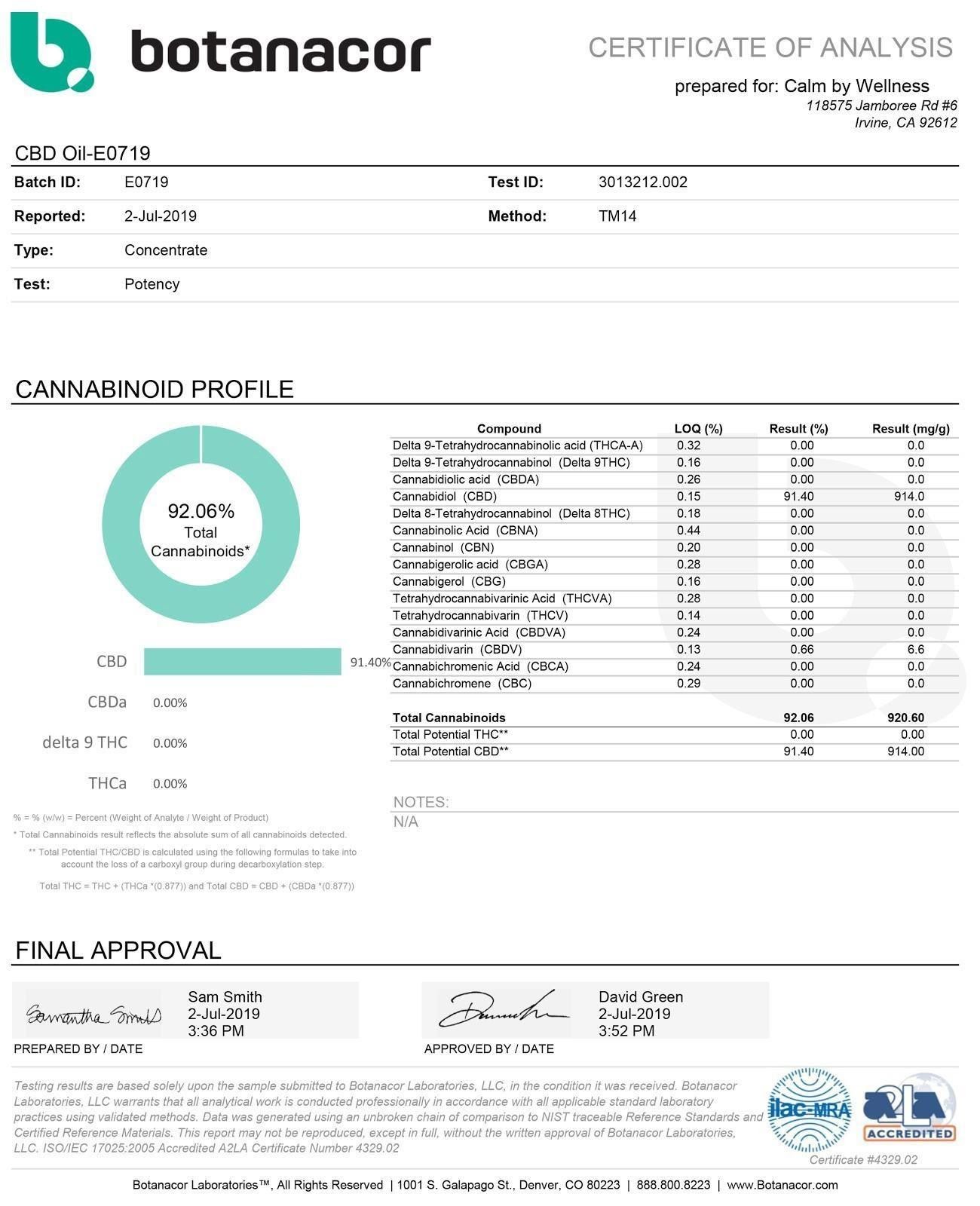

(Sample certificate of analysis of a CBD product. Source: Alphagreen)
Apart from the general product contents, you should also ask to see the results of:
- Pesticide testing (you’ll want to have a ‘clean’ product).
- Microbiological testing (showing there’s no bacteria or mold inside the sample).
- Residual solvents testing (prompts if there any stray chemicals remaining from the extraction process).
Secondly, your product quality will impact customer satisfaction and your CBD brand reputation. After all, 24% of CBD users named the ability of the product to generate the “desired effect” as their primary purchase driver. When your product fails to deliver on the ‘effects’ promise due to poor content, you’d struggle to win repeat business. Other buying priorities include ingredients quality, price, concentration and consumption method (e.g. oil, edible, vape).
Considering that CBD production remains underregulated, many ‘fake’ products end up on the shelves: ones containing no cannabidiol inside.
Such sham brands and manufacturers, speculating on the CBD sweeping popularity, are making it harder for the honest CBD companies to break into the industry. As The New York Times feature on the origins of CDB popularity sums it up:
“As a result, the compound is often caricatured as snake oil, a scam, even as promising research into the full potential of CBD is starting to pick up.”
As a new CBD brand, you don’t want to end up on the sham side. Again, this is another reason why you should do careful due diligence when assessing different CBD manufacturers. Beyond requesting or performing an independent certification of analysis, also evaluate a potential wholesaler based on the following criteria:
- Hemp sourcing method and origin.
- Extraction method.
- Reviews from other entrepreneurs.
- Pricing.
- Extra services (e.g. labeling, dropshipping).
Discover the Perfect Ecommerce Platform
Apart from finding a trustworthy CBD supplier, you’ll also need to identify the (best) ecommerce platform for your operations. Just like quality products, your tech infrastructure will positively contribute to your customers’ satisfaction with your brand.
But, not every ecommerce platform allows creating an online CDB store due to opaque regulatory status. Still, you have some really good options!
1. BigCommerce.
BigCommerce offers a bevy of B2C and B2B ecommerce features for CBD retailers, wholesalers and manufacturers. From drag-and-drop page builders to limitless customization opportunities to 0% transaction fees and 99.9% uptime, we provide global CBD businesses an integrated ecommerce solution they need to start their operations fast and scale without constraints.
2. Shopify.
Shopify only allows US-based merchants based in certain states to sell CBD or hemp-derived goods on their platform. If you are eligible, you gain access to a nice set of core commerce features for launching your digital operations including design templates, integrated shipping, marketing tools and payment processing. But the proprietary Shopify Payment method isn’t available for CBD products. So you’ll need to get approved by a third-party payment processor.
3. 3dcart.
3dcart is another ecommerce platform that allows hosting digital CBD and vape-related businesses. They offer similar ecommerce solutions — shopping cart software, embedded ‘buy’ button and full-scale ecommerce website builder, featuring themes, unlimited bandwidth, payment processor support and more. However, their website backend comes with a bit of a learning curve, so 3dcart may not be the optimal choice for non-coding beginners.
Build Up Your CBD Website
By opting for an ecommerce platform, over open-source ecommerce tools, or custom development, you reduce the website development timeline. Since the solution provider handles hosting, infrastructure and all that jazz, all you have to do to get your CBD operations off the ground is work on your store design and list products.
1. Customize your design.
Have you ever painted by numbers? Design experience on modern ecommerce platforms is pretty similar to that. Instead of starting with a blank canvas, you rely on a website theme — your set of pointers, pre-mapping the final store look.
You can still be creative though, changing colors, layouts, fonts and other visual elements or even adding new elements to your online store.
When it comes to CBD ecommerce store design make sure that:
- Key product information has a prominent spot: Most of your customers will want to know the key product specs: dosage/strength, hemp origin, extraction method, and possible benefits. Make sure all of this information is displayed in a digestible manner for each type of product. CBDistillery goes straight to business and highlights product ingredients and suggested use:
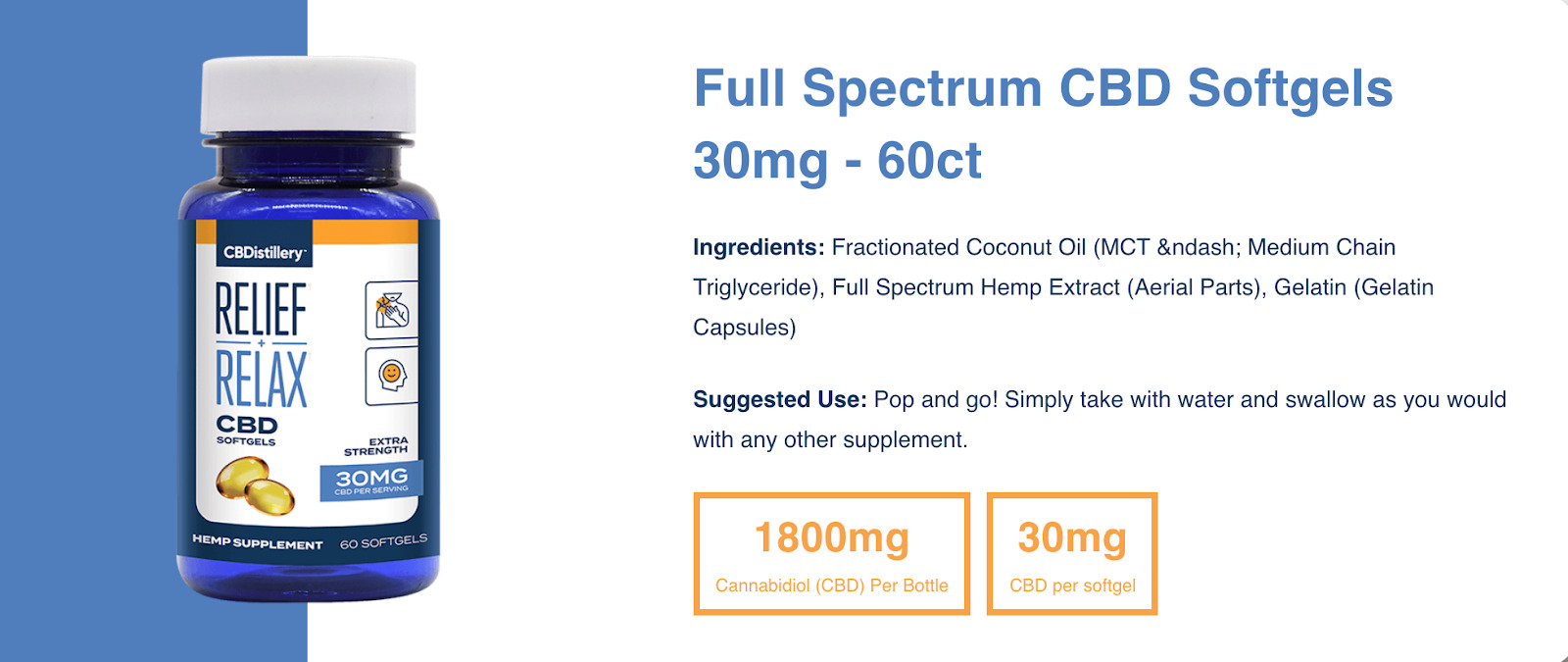

- Mind the navigation: Since CBD is still a somewhat new niche, expect to see an influx of first-time buyers. These folks will need some extra hand-holding, unlike regular users. Design your on-site navigation to accommodate their customer journey. Create descriptive product categories and sub-categories, organizing your products by consumption method, strengths, use cases. You can also create a quick self-assessment quiz and place it in the header area, to make more personalized product recommendations.
2. Add products and descriptions.
In the CBD space, your product descriptions should be more than just convincing. They also need to be:
- Accurate and fact-based.
- Devoid of any health claims.
- Cliche- and jargon-free.
When it comes to CBD marketing, FDA does not allow businesses to suggest that any of their CBD products can “diagnose,” “cure,” “treat,” or “prevent” any type of medical condition. Even if it’s tempting, don’t go making any big claims.
What you can do though is reference actual medical research done around CBD usage. Also, you can leverage the voice of customer data — public/private reviews, first-hand accounts/stories, general feedback — in your product listings.
Lastly, don’t write overly complex product descriptions. Not every store visitor will be a CBD connoisseur, familiar with the industry lingo. So while you should always provide ‘technical’ product information, avoid niche chemical terms, industry jargon and odd CBD pop culture references.
3. Shoot and upload product photos.
Ecommerce photos do two important things:
- Act as an extension of your brand.
- Help sway customers’ purchase decisions.
For example, 90% of Etsy shoppers said that product image quality is a purchase trigger for them.
If you have the budget, hire a professional photographer to shoot a series of product-only and lifestyle images for your brand. Those short on cash can also snap amazing ecommerce pictures on a budget.
Determine Shipping and Payment Terms
After you designed your store layout and organized your product catalog, you need to sort out how your products will reach their new owners.
1. Determine your shipping policy.
Shipping is important to ecommerce consumers. So you don’t want to let them down in that department. To work out the optimal shipping policy for your CBD business ask yourself these questions:
- What’s the threshold I set for ‘free shipping’? For 79% of US consumers “free shipping” is a strong prompt to buy online more. But do people get upset when there isn’t such an option? In general, yes, over a third of consumers will be upset if there’s no complimentary shipping for an order valued above £135 ($150). Determine a reasonable threshold for your brand based on anticipated average order value.
- Do you plan to offer a variable fee? Destination-based or weight-based shipping fees can help a smaller retailer reduce logistics costs. But they may alienate some customers too: 50% of abandonments happen when the shipping/tax costs are too high. The fix? Provide estimated shipping costs or a delivery calculator option pre-check out if you plan to use variable fees.
- What delivery timeline is feasible? Most people are spoiled by Amazon Prime next-day deliveries, but few smaller brands can pull off the same levels of service nation-wide. So choose your battles. Limit same-day delivery to your city/state only. Set the right expectations regarding priority/express delivery if you plan to offer such.
- Which logistics carrier works best? Not all carriers have straight policies regarding CBD shipments. Do your research carefully. For example, while UPS allows shipping hemp and CBD-infused products, they also state that “[we] reserve the right to dispose of any shipment containing Marijuana, Hemp or Hemp products tendered for shipment which Shippers are prohibited from shipping, which UPS is not authorized to accept, which UPS states that it will not accept, or which UPS has a right to refuse.” That’s not very reassuring.
2. Select an ecommerce shipping solution.
Your next step is to select supporting shipping and fulfillment software — a tool that will help you set shipping rates, manage logistics, print labels and auto-dispatch updates to customers. To minimize hassle and mistakes, your app should integrate directly into your ecommerce platform. You can discover different shipping and fulfillment apps on the BigCommerce marketplace. Don’t forget to check if your pick also iterates with the carrier you plan to use!
3. Choose a payment processor, fit for CBD.
CBD industry is deemed as “high risk” due to the ongoing regulatory debacle. Thus, many payment processors choose to exclude CBD sellers to minimize their operational risks. But you are not completely out of options. To accept payments from customers, you can work with a specialized payment processor who knows how to handle high-risk business.
BigCommerce, for example, lets CBD businesses choose among 65 payment gateways that can be used to do business in over 100 countries, using some 250 local payment methods. Get to know more about how payment processing works for CBD companies.
Market Your CBD Company
Now that you are up and operational, you need to focus on customer acquisition. While the CBD industry is trendy right now, shoppers won’t flock to you on autopilot. Unless you set yourself up with a solid marketing system.
1. Focus on content.
CBD products are still largely misunderstood often, due to shady marketing from other brands or bogus medical claims made by self-proclaimed gurus. Build your initial customer base by seeding accurate content. Educate the interested, but cautious, buyers about:
- Different product types.
- CBD extraction methods.
- Possible benefits and results.
- Potential side-effects.
- Correct usage/dosage.
- The hemp industry as a whole.
Invite industry experts and use claims from verified sources to create more comprehensive content than your competition. Focus both on your blog and social media especially, as that’s where most younger consumers go looking for both product inspiration and info.
2. Leverage SEO.
Publishing well-research content is key to dominating the search engine results. Especially with the latest Google update called ‘passage indexing’. By honing its AI algorithms, Google now indexes individual passages from a web page (rather than just the entire page) to help users find needle-in-a-haystack info.
So for instance, if I’m googling something like “What’s the best strength of CBD oil?”, I’m redirected to a highlighted result on the page:
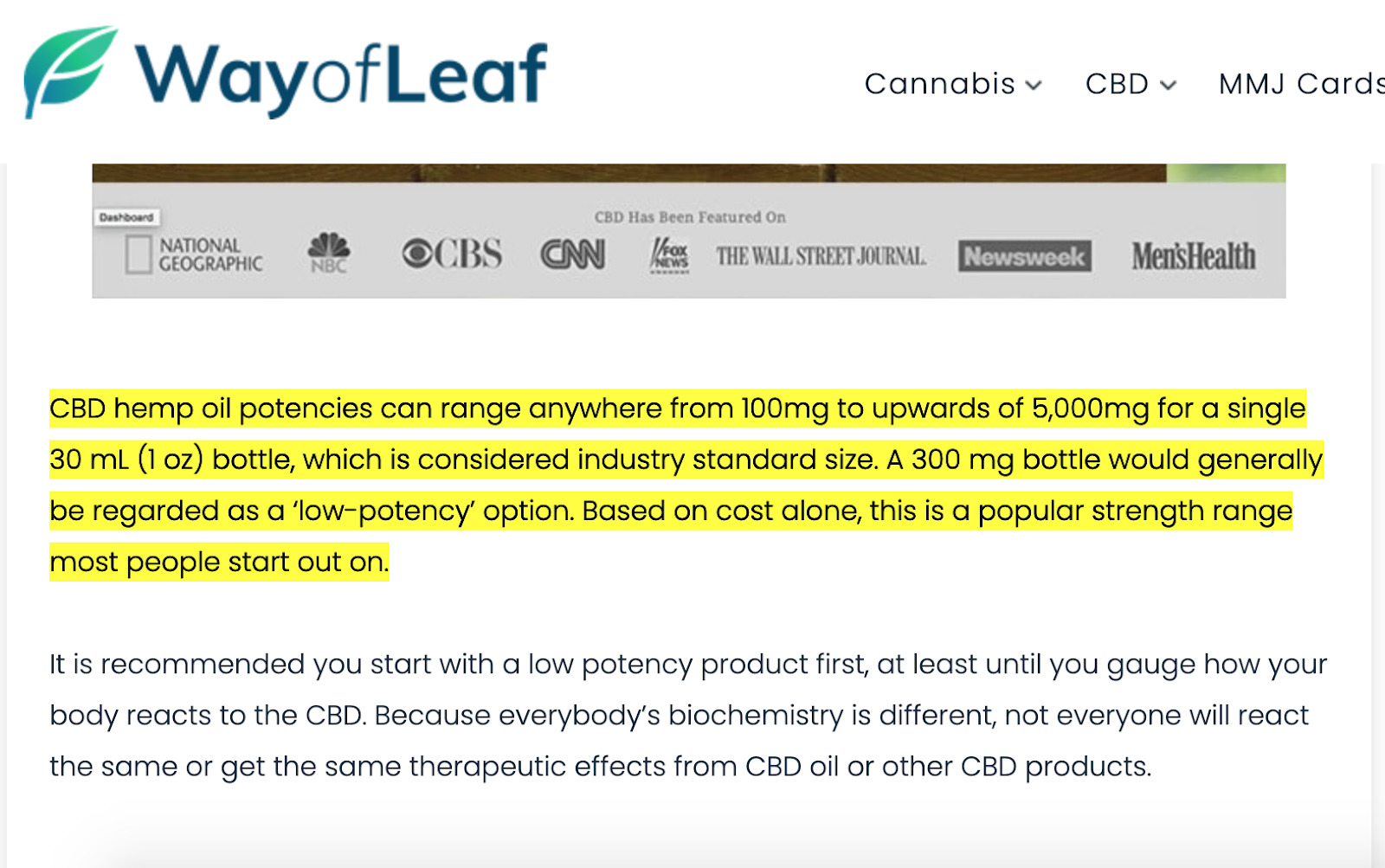

Source: Way of Leaf
For CBD businesses this SEO change is a great opportunity to attract top-of-the-funnel customers and convert them with educational content.
Since SEO-competition around CBD-related keywords is pretty intense, going after long-tail, less-searched keywords can help you build the initial traffic, while you work on further optimizations.
3. Partner with influencers.
Much of CBD’s current popularity comes as a direct result of patients’ advocacy and evangelism. First-hand stories from people, whom CBD helped cope with chronic pain and seizures, initially spurred the mass-interest in the plant both for therapeutic and wellness purposes.
Today, a ton of celebs are outspoken fans of the CBD. Some of them even launched their CBD businesses. So finding credible advocates for your brand shouldn’t be an issue. Just ensure that you are partnering with people who share your brand beliefs and can speak about CBD with authority. Also, don’t forget about mandatory FTS disclosures.
Lastly, keep close tabs on the latest FDA regulations (as these change as we speak) to make sure your communication stays in line with the requirements. Also, individual states have different regulations when it comes to CBD advertising. Be sure to verify local rules too.
4 Evergreen Issues CBD Businesses Are Facing
While entrepreneurs in the CBD industry can capitalize on the industry’s rapid boom, they should also brace themselves for a set of unique challenges. With a lack of FDA guidelines and differences in CBD regulations on the state level, running a CBD business can feel particularly gruesome at times. Especially when it comes to:
1. Banking and financing.
Sadly, CBD businesses are considered ‘high-risk’ by many financial service providers due to the aforementioned gaps in state laws and regulations. So prepare to do some walking and negotiating when opening a merchant account. Securing extra financing via business loans can be challenging too, again thanks to the bad rep the cannabis industry has among certain FIs. But don’t despair. There are some hemp-friendly banks and investors in the field too.
2. Payment processing.
Payment processors aren’t making life easier for CBD sellers either. Most wrongly stigmatize such companies, unlike BigCommerce. Since 2019, we are offering our customers access to an array of hemp-friendly payment processors, along with other essential tools for building an ecommerce store.
3. Business insurance.
Insurers are slow to act on the recent legalization of hemp and hemp-derived products. Just like conservative banks, they are often barring CBD companies altogether or burden them with crazy-high premiums. But having a solid insurance plan is crucial for your company’s liability. So don’t skim on getting a good plan from a CBD-friendly insurer.
4. Differentiation from the competition.
With a slew of businesses touting ‘cannabis’ as a customer attractor, it may be difficult to stand out even when you sell genuine, high-quality cannabis products. A 2017 Penn University study, found that 70% of cannabinoid products sold online had issues with labeling. Over 42% of CBD products were under-labeled, meaning that they contained more CBD than stated. Some 26% were over-labeled — they had a lower condensation of cannabinoid than stated.
Such happenings, along with misleading marketing and grossly overstated claims regarding CBD’s effectiveness are making new customers skeptical towards recent market entrants. Gain their trust by being positively different when it comes to:
- Transparency: From telling where your hemp plants grow to display proper certification of analysis, explain to your customers what they are about to purchase and munch.
- Accuracy: Avoid unverified scientific statements (even if they look promising for marketing). Check your sources, invite known experts to help you create content and educational brochures. Make honest, no-nonsense claims to set yourself apart from the sleazier types.
- Storytelling: Some of the most successful CBD businesses were launched by long-term CBD evangelists and regular folks, whose chronic health condition was majorly alleviated by CBD. Your unique story, cementing your brand mission and values, can help you build a stronger emotional connection with your target audience. For example, CBD for Life tells a story of how their founder concocted a CBD cream to help her alleviate the back pain.
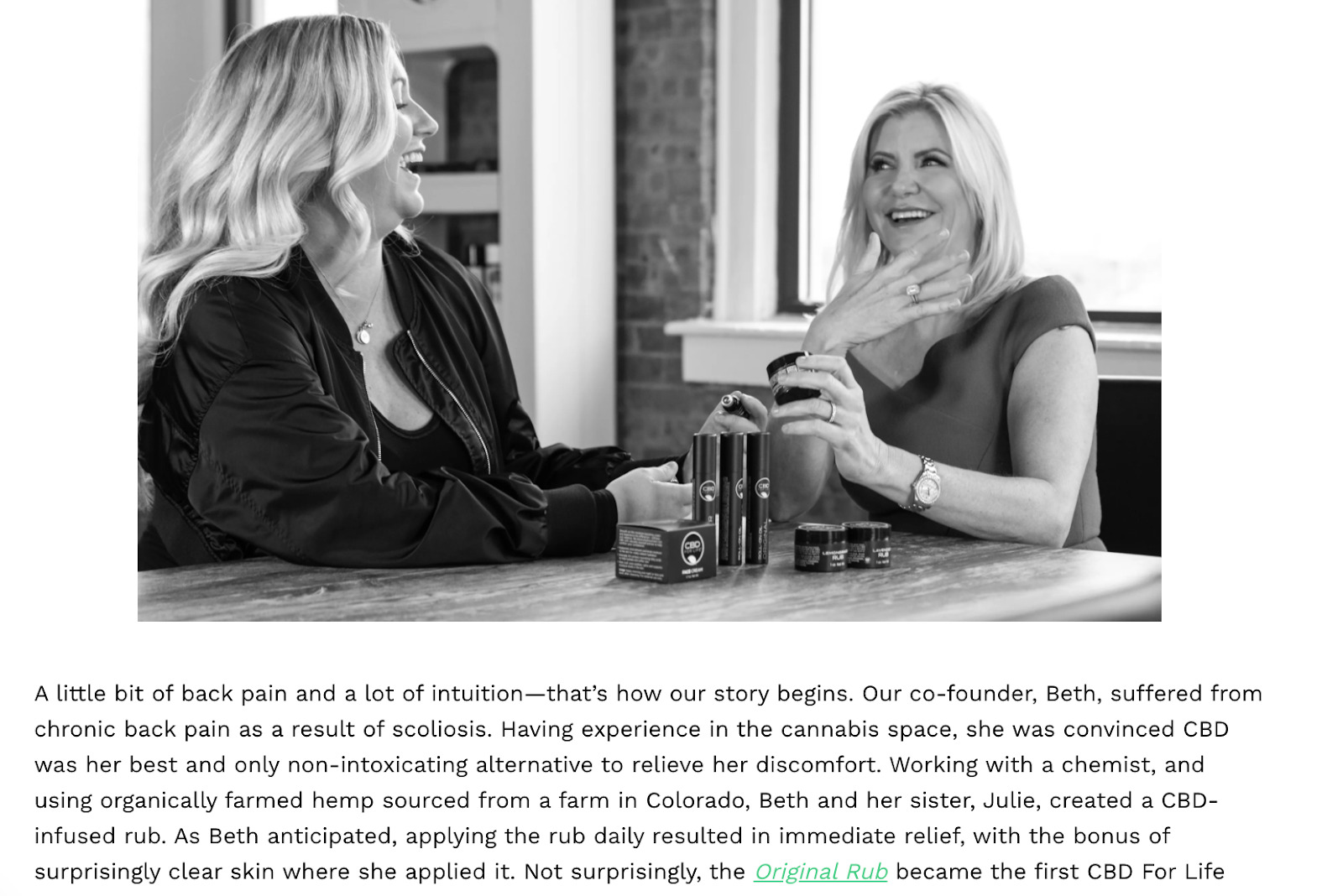

Source: CBD for Life
3 Core Tips for Nurturing Your CBD Business
New ecommerce companies are very tender. If you want your CBD business to grow, evolve and always be ripe, here are three things you should consider doing.
1. Ask for help.
Between murky regulations and operational issues, new CBD business owners will have a lot of their platter. While everything is searchable on Google these days, you shouldn’t underestimate the value of a mentor aka someone who already walked the same walk before you.
As Andre Bourque said on Forbes:
“That’s the rub of excelling in the cannabis industry: there’s no model of excellence right now. It’s a fluid and shifting industry that didn’t really exist just a few years ago.”
That makes finding a good industry mentor somewhat challenging. Yet, not impossible. AngelList has 1,210 marijuana investors and that’s just one place. Non-profit organizations such as CBD Alliance, National Hemp Association and Vote Hemp are also great places to find new industry connections and support.
2. Have patience.
Fast traction is often viewed as a given in the ecommerce industry. You sure have heard literally overnight success stories where some “$500 Instagram ad drove $50,000 in sales in a day”.
In the CBD industry, paid ecommerce ads are not an option. Click-bait marketing can cause compliance issues, while content marketing and SEO both take time to work. So take a deep breath and prep several buckets of mental patients to methodically work through the different kinks of running CBD operations.
3. Understand the industry.
Despite (or because of) slow FDA response, the CBD industry keeps evolving in somewhat contradictory directions. While some states e.g. Texas removed the ban on selling edible CBD products in 2019., others banned CBD-infused foods and beverages last year.
Subsequently, market trends and consumer trends change from week to week too. Especially, when some celebrity like Gwyneth Paltrow announces her involvement in a new CBD venture or throws a CBD-themed baby shower as Kim Kardashian did.
For sure, no CBD business can or should stay atop of all the latest trends and fads. But they do need to keep close tabs on emerging tendencies among their clients, changes in compliance requirements, along with other major industry happenings.
Wrapping Up
CBD is an interesting product to trade. On one hand, you can make a genuine difference by supplying your customers with life-improving goods. On the other, you also need to constantly educate the general public (along with some B2B partners and other stakeholders) about your products’ actual benefits, their legality status and lack of connection with THC-dominant marijuana.
That can be a tough battle. But well worth it when you look at the CBD industry sales prospects again. Grandview Research estimates that the CBD market will swell by a compound annual growth rate of 22.2% between 2019 and 2025.
And you can be part of that revenue pool too if you launch your online CBD business today!
This material does not constitute legal, professional or financial advice and BigCommerce disclaims any liability with respect to this material. Please consult your attorney or professional advisor on specific legal, professional or financial matters.

